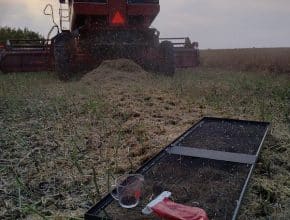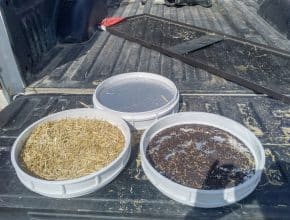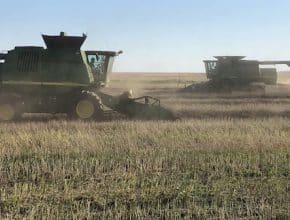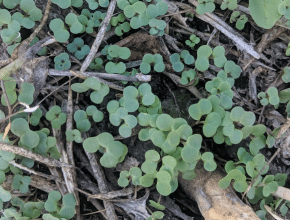Home / Canola Watch / September 18, 2019 – Issue 25
-
-
CCC agronomy specialists are seeing more verticillium stripe this year. Look for shredding of the outer stem tissue. As the stem’s outer skin peels back, you can see tiny black microsclerotia beneath the surface…
-
Best time for... perennial weed spraying, disease surveys, swathing, straight combining and pre-harvest glyphosate/Reglone/Heat LQ,…
-
Canola producers can lose up to five bushels per acre – perhaps even more – if the combine isn’t adjusted properly. Here are tips to measure combine losses and make adjustment to limit those losses, putting more canola in the bin and reducing the volunteer canola seedbank in your fields…
-
Give your future seedbed a good start by managing residue this fall. Here’s how… Combine adjustments. Let the combine do the work to provide a thin even layer of residue.……
-
The general advice is to leave them. As annuals, frost and winter will kill off most of them, and any money spent trying to control these volunteers would be wasted. Possible exceptions that may change your approach…
-
In celebration of Phosphorus Week and the 350th anniversary of the discovery of this essential element for agriculture, Fertilizer Canada launched "4R Management of Phosphorus Fertilizer in the Northern Great Plains: A Review of the Scientific Literature”, written by Cindy Grant and Don Flaten.Here are a few key messages…
-
Harvest delays due to soggy soils, frequent rains and even mist have canola growers wondering about risk to the crop and what, if anything, they can do reduce these risks…
-
A lot of canola crops across Western Canada need a couple of weeks before all seeds are physiologically mature. With the frost risk rising with each passing day, farmers wonder if they should hurry up and cut that crop – even if cutting it green means a big sacrifice of yield…




